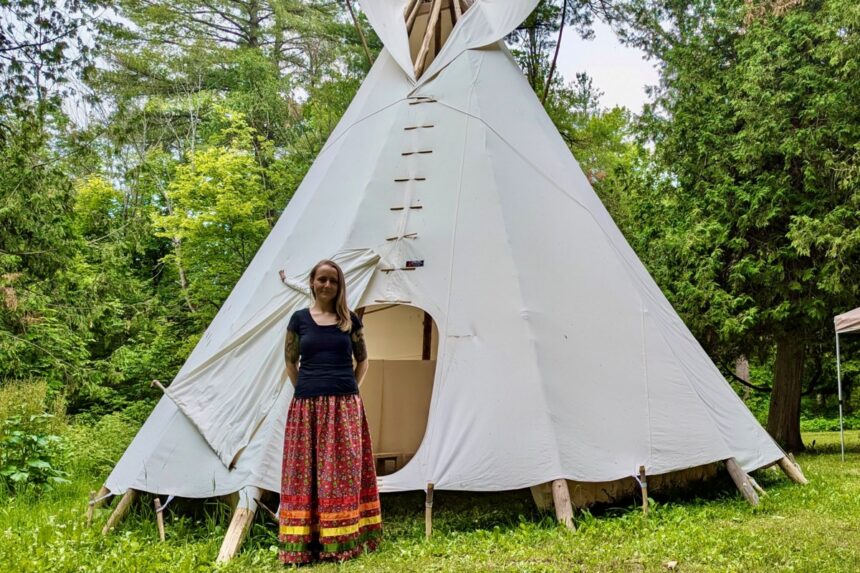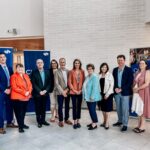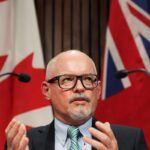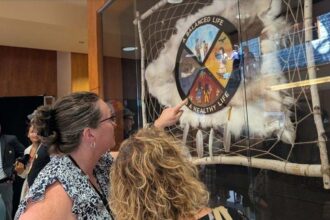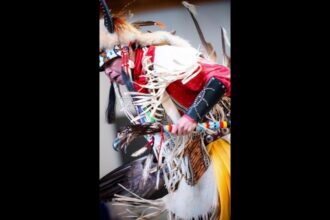The soft beating of drums echoed through the forest canopy at Springwater Provincial Park on Saturday as hundreds gathered to celebrate National Indigenous Peoples Day, creating an atmosphere of both reverence and joy amid traditional ceremonies and cultural exchanges.
“This day represents an opportunity for understanding, for healing, and for celebration,” said Elder Mark Douglas of the Rama First Nation, who led the opening ceremonies with a traditional smudging ritual. “When we share our culture with open hearts, we build bridges between communities that have too long been separated.”
The annual celebration, now in its seventh year at Springwater Park, has grown from a modest gathering to one of the region’s most significant Indigenous cultural events. This year’s attendance surpassed expectations with over 600 visitors participating in activities ranging from traditional dance performances to interactive artisan workshops.
The Beausoleil First Nation dancers captivated audiences with vibrant regalia and intricate footwork that told stories passed through generations. Meanwhile, knowledge keepers offered teachings about traditional medicines, explaining how various plants found within the park have been used for healing purposes for thousands of years.
“Many people don’t realize that this park sits on traditional territories with deep historical significance,” explained event organizer Jennifer White. “These lands contain stories that predate European settlement by millennia, and today’s event helps preserve and share that living history.”
For many attendees, the culinary experience proved equally enlightening. Food vendors offered traditional fare including Three Sisters stew, bannock, and wild berry preserves, providing tastes of Indigenous cuisine that remain relevant despite centuries of cultural disruption.
Local schools participated actively, with students from six area institutions displaying art projects created through Indigenous education initiatives. Eleven-year-old Sophia Martinez, who attended with her parents, described the experience as “way better than learning from books” as she practiced weaving techniques under the guidance of a Métis artisan.
The event wasn’t solely focused on celebration, however. A dedicated space for conversation about reconciliation addressed ongoing challenges facing Indigenous communities across Canada. Speakers discussed water quality issues on reserves, the continuing impacts of residential schools, and the importance of incorporating Indigenous knowledge into environmental protection efforts.
“Reconciliation requires more than acknowledgment—it demands action,” said Chief Patricia Johnson-Engel from Chippewas of Rama First Nation. “Events like today create space for difficult conversations alongside celebration, which is how real progress happens.”
Provincial representatives attended the gathering, with Ministry of Indigenous Affairs spokesperson Thomas Clarke affirming the government’s commitment to strengthening relationships with First Nations communities through policy initiatives and educational programming.
As the sun began to set, the celebration culminated in a round dance where hundreds of participants—Indigenous and non-Indigenous alike—joined hands in a circle that symbolized unity. The powerful visual representation of community left many attendees visibly moved.
“I’ve been coming to this event for three years now,” said Barrie resident Michael Chen. “Each time, I learn something new about the history of the land I live on and the peoples who stewarded it for thousands of years. It’s changed how I think about my place in this community.”
For organizers, the event’s growing attendance signals increasing interest in Indigenous culture and reconciliation efforts across the region. Plans for next year already include expanded programming and additional space for more community organizations to participate.
As we reflect on celebrations like this across the country, perhaps the most important question remains: How can we transform the goodwill and understanding generated during Indigenous Peoples Day into meaningful action that addresses the systemic inequities still facing First Nations, Métis, and Inuit communities throughout the year?

